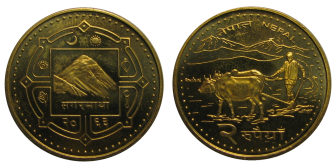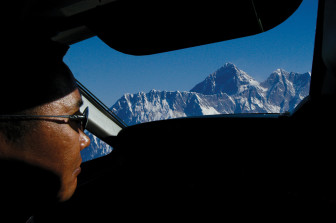1. What is the Uncovering Asia conference?
Uncovering Asia is the second major investigative journalism conference to be held in Asia. It is a skills-based training conference designed to strengthen the capacity and networks of investigative reporters, data journalists, and others engaged in watchdog, accountability journalism. The conference is hosted by the Global Investigative Journalism Network, the Centre for Investigative Journalism, Nepal, and the Konrad-Adenauer-Stiftung.
The groundbreaking first Uncovering Asia Conference was held in Manila on November 22-24, 2014, and attracted 300 people from 30 countries.
2. Who will the speakers be and what can we expect for the program?
Uncovering Asia will host speakers from more than 30 countries, including many of the world’s top trainers in investigative and data journalism. Our keynote speaker will be Walter “Robby” Robinson, who led the Boston Globe Spotlight team’s Pulitzer Prize winning investigation into the Catholic Church sex abuse scandal. We will also feature a showcase panel on The Panama Papers, with ICIJ and its Asian partners.
3. Where’s the conference?
The conference venue is the Hotel Hotel Yak & Yeti, a deluxe hotel in the heart of Kathmandu, Nepal, and just moments away from the shops of Kathmandu’s Durbar Marg.
The hotel offers 270 rooms, dining options, a lively bar and a spa with a gymnasium, outdoor swimming pool, two tennis courts and jogging track.
4. How can I register?
Online registration is now closed. If you haven’t registered online, you can register at the conference hotel, the Yak & Yeti. There will be a registration desk all day Thursday, Sept. 22 and Friday, Sept. 23 — look for the IJAsia16 banner. You can pay the US$200 fee by cash or credit card. Registration includes lunches, the Thursday reception, Saturday banquet, and access to all sessions.
Note: Credit Card payments will be available from 9.45 to 3.30 on Thursday and from 9.45 to 2 pm on Friday.
5. How can I pay the conference fee?
If you are based in Nepal, register directly with the Centre for Investigative Journalism, Nepal. All other attendees should pay through the registration site. You’ll have the option to pay with one of four credit cards (Mastercard, Visa, AMEX, or Discover). You can also pay at the venue on September 22 and 23, with either cash or a credit card.
Note: Credit Card payments on the venue will be available from 9.45 to 3.30 on Thursday and from 9.45 to 2 pm on Friday.
6. Is there financial assistance for journalists to attend?
GIJN and its partners are giving out more than 80 fellowships for journalists from developing countries to attend. The deadline to apply was May 15 and all fellows have now been contacted. To stay informed about opportunities for future events, subscribe to the GIJN newsletter.
7. Where can I find the cheapest flights to Kathmandu?
The cheapest tickets to Kathmandu can be found through sites such as Momondo, Kayak, Expedia, or Hotwire. Be sure to check if you need a visa or a transit visa if transferring through other countries!
8. What about transportation from the airport and in the city?
From the Airport
The hotel has a shuttle service to and from the Tribhuvan International Airport (TIA) on Wednesday and Thursday, September 21 and 22. The conference is arranging guides who will meet attendees at the terminal — look for the IJAsia16 banner.
You can also take a pre-paid taxi, which takes you the 20-minute ride to the hotel. The cost can be up to NPR 1000 (USD 10).
Public transport is available but is irregular and crowded. It is best to negotiate with the cab driver even if they are metered.
Traveling Around
Travelling to tourist areas like Pokhara and Chitwan can be done in tourist coaches that leave from Thamel every morning. Domestic air travel has different fares for Nepalis, Indians, and other foreigners.
9. Where should I stay?
Check out our Hotel section.
10. Do I need a visa to enter Nepal?
A Nepal 15-day visitor visa is available on arrival at Kathmandu’s Tribhuvan International Airport for US$25. Bring extra funds in USD and passport photographs of yourself. Visas are also available for 30 and 90 days for higher fees. Visa fees are waived for nationals of South Asian countries and China. Indian nationals do not need visas.
You can get a tourist visa online and avoid the visa line at the airport. More information about visas here.
Nationals from Nigeria, Ghana, Zimbabwe, Swaziland, Cameroon, Somalia, Liberia, Ethiopia, Iraq, Palestine, Syria and Afghanistan can not not get visa on arrival in Kathmandu and will need to obtain visas from Nepal Embassies in their respective countries or the nearest embassy.
For more information check out www.nepalimmigration.gov.np
11. What is the dress code for the conference?
Business casual. Men — no ties are needed.
12. How can I become a conference sponsor?
Interested in helping sponsor the conference? Media organizations sending at least five people or contributing US$5,000 or more can become a conference co-sponsor. For sponsorship opportunities, contact us at hello@gijn.org.
13. What else do I need to know?
Currency
The Nepal Rupee (NPR) is pegged to the Indian Rupee (INR) at 160:100, and the current exchange rate is 1 US$ = NPR 108. The daily exchange rate is published on most news websites. Major banks, hotels and exchange counters at Tribhuvan International Airport provide services for exchanging foreign currency
 Remember to keep your foreign exchange receipt while making foreign exchange payments or transferring foreign currency into Nepali rupees. The receipts may be needed to change left-over Nepali currency into hard currency before leaving the country.
Remember to keep your foreign exchange receipt while making foreign exchange payments or transferring foreign currency into Nepali rupees. The receipts may be needed to change left-over Nepali currency into hard currency before leaving the country.
Only 10 percent of the total amount may be converted back into foreign currency by the bank.
The Nepali Rupee (Rs.) is divided into 100 paisa (p). There are coins for denominations of one, two, five and 10 rupees and banknotes in denominations of one, two, five, 10, 20, 50, 100, 500 and 1000 rupees. Away from major centers, changing Rs 1000 note can be difficult, so it is always a good idea to keep a stash of small-denomination notes.
————————-
Language
Nepali is official language, widely understood and spoken. Many people may also understand basic Hindi and English in metropolitan areas like Kathmandu.
————————-
Electricity
Nepal is facing a severe power shortage, and electricity is rationed. But most hotels and restaurants have generators. When it is available, the electric supply is 220 volts and 50 hz. There is no standardised wall socket, so it may be wise to bring along a universal plug adapter. A small torch (flashlight) may be handy.
————————-
Mobile
Cell phone SIM cards from the two main providers (Nepal Telecom and NCell) are available at the airport and the city. You may be required to fill out a form and provide a photograph to obtain a SIM. Kathmandu and major cities have 3G data. Nepal’s area code is +99 and Kathmandu area code is 1.
HOTLINES AND IMPORTANT NUMBERS:
International Code: 977
Kathmandu City Code: 1
Directory Assistance: 197
Police & Fire: 100
Tourist Police: 4226358/4226403
Department of Immigration: 4223509/4222453
Ambulance Service(Red Cross): 4228094
Tribhuvan International Airport (TIA): 4472256/4472257
————————-
Weather
Late September is the tail end of the monsoon season; the days will be bright, warm and humid (highs of 27°C/80°F and lows of 17°C/63°F). There will be a 75% chance of rain, falling mainly at night. Temperature at higher altitudes in the trekking areas will be colder. Pokhara is only at 800m above sea level and is semi-tropical, while the Chitwan National Park will have highs of 30°C, 87°F.
————————-
What To Wear
Dress casually. Shorts and T-shirts are okay for walks around the city. Since the sidewalks and roads are rough, you may want walking shoes, but no hiking boots unless you are going for a post-conference trek.
————————-
Health
Kathmandu streets can be dusty due to roadside construction, and vehicular pollution can be a problem. Kathmandu is located at 1,180m above sea level so altitude sickness should not be a problem, unless you are trekking in the high mountains. It’s best to be careful about drinking water (don’t drink tap water, and avoid uncooked food and salads). Bring mosquito repellents and any prescription medicines that may not be available locally like antihistamines, antibiotics, anti allergy medications.
————————-
Tourist Destinations

Nepal is a beautiful country located in South Asia between China in the north and India in the south, with the east and west comprised of multiple ethnic groups of people with diverse culture and religion. It is a home to ancient temples, breathtaking landscapes, mountains and valleys where people greet you “Namaste” with a smile on their faces. Adding color to the lives of Nepalese are festivals the year round which they celebrate with much pomp and joy. Mt. Everest, the highest mountain in the world, is of course located in Nepal.
For more information on tourism in Nepal, click here.
